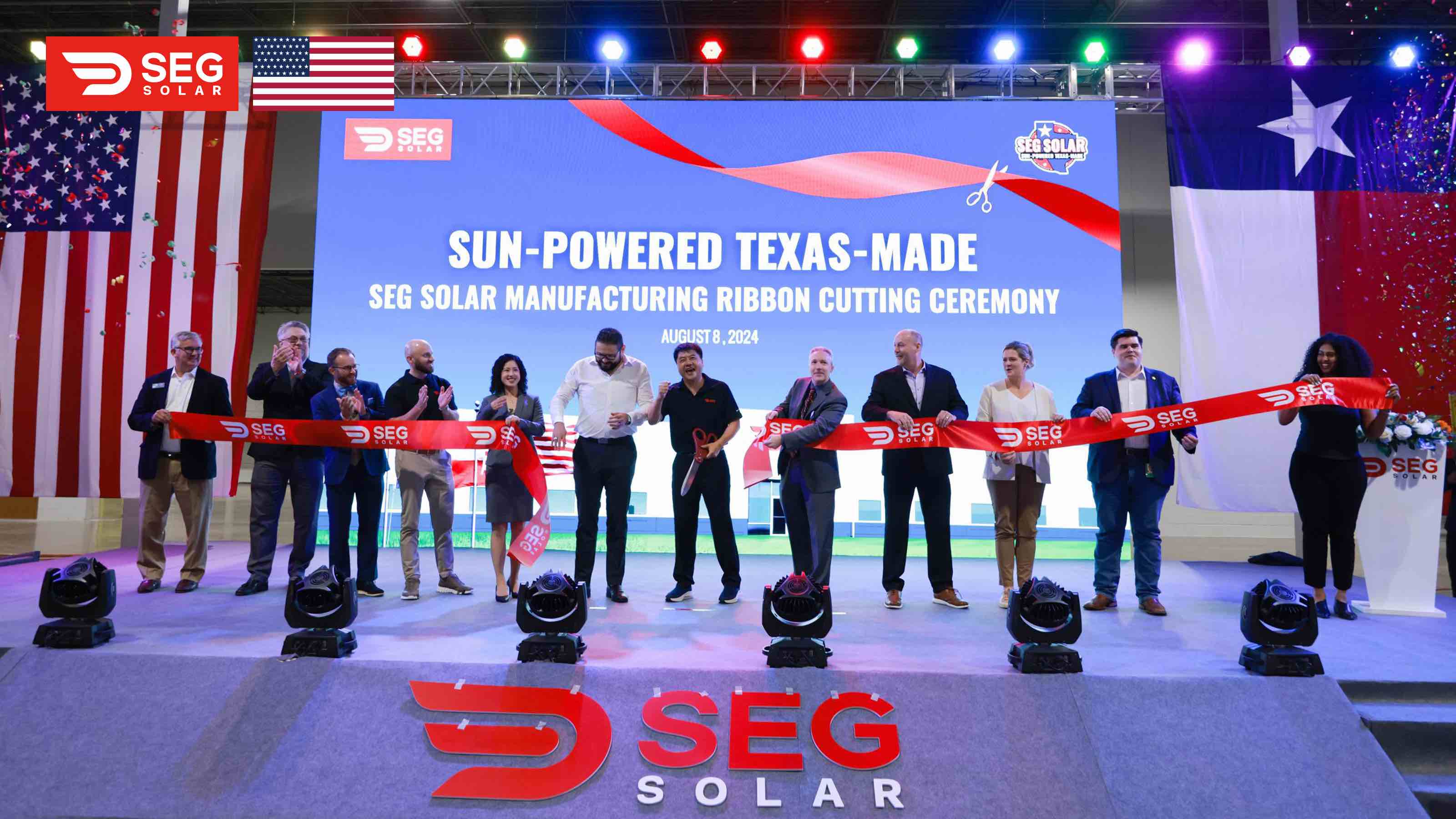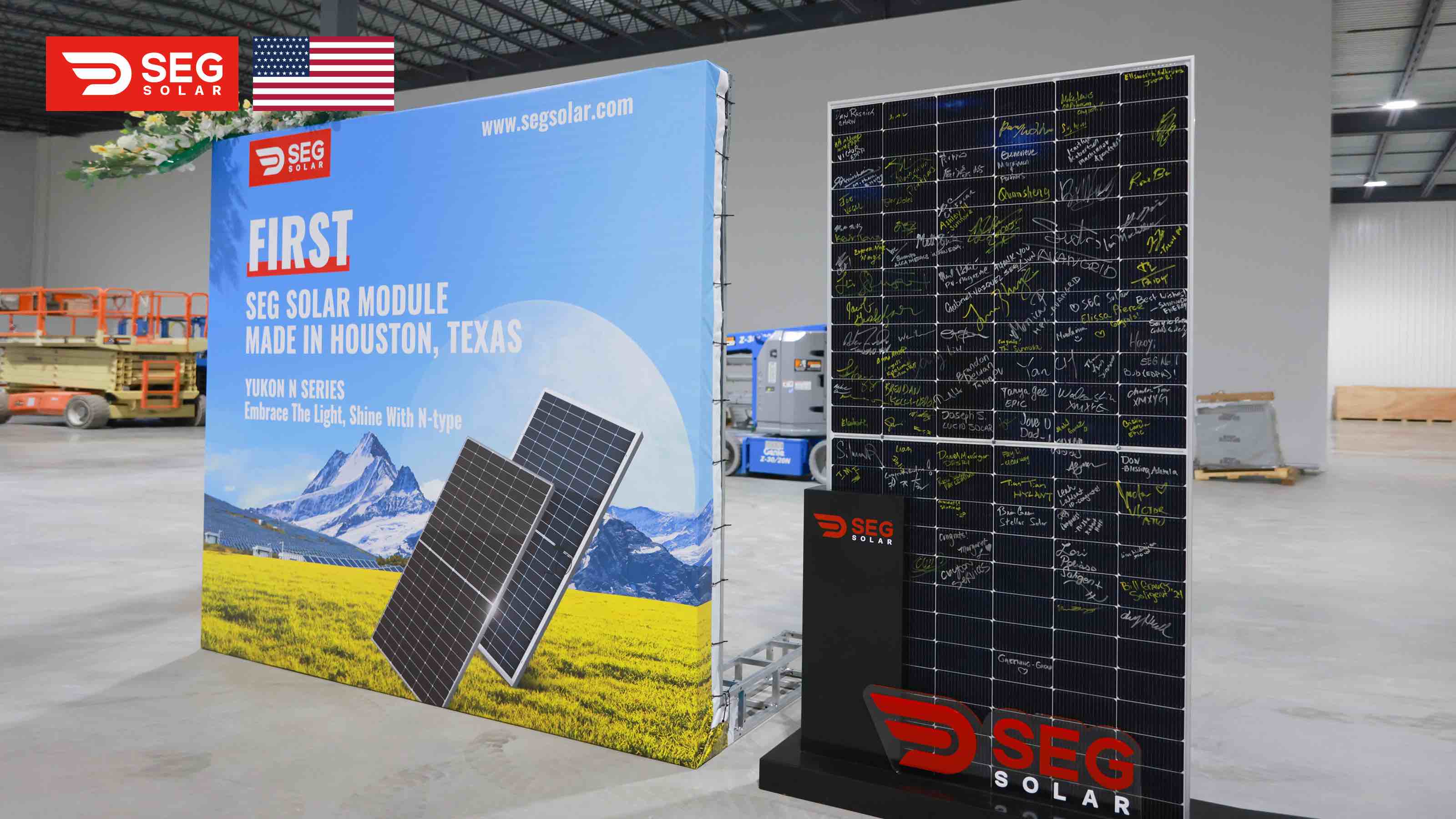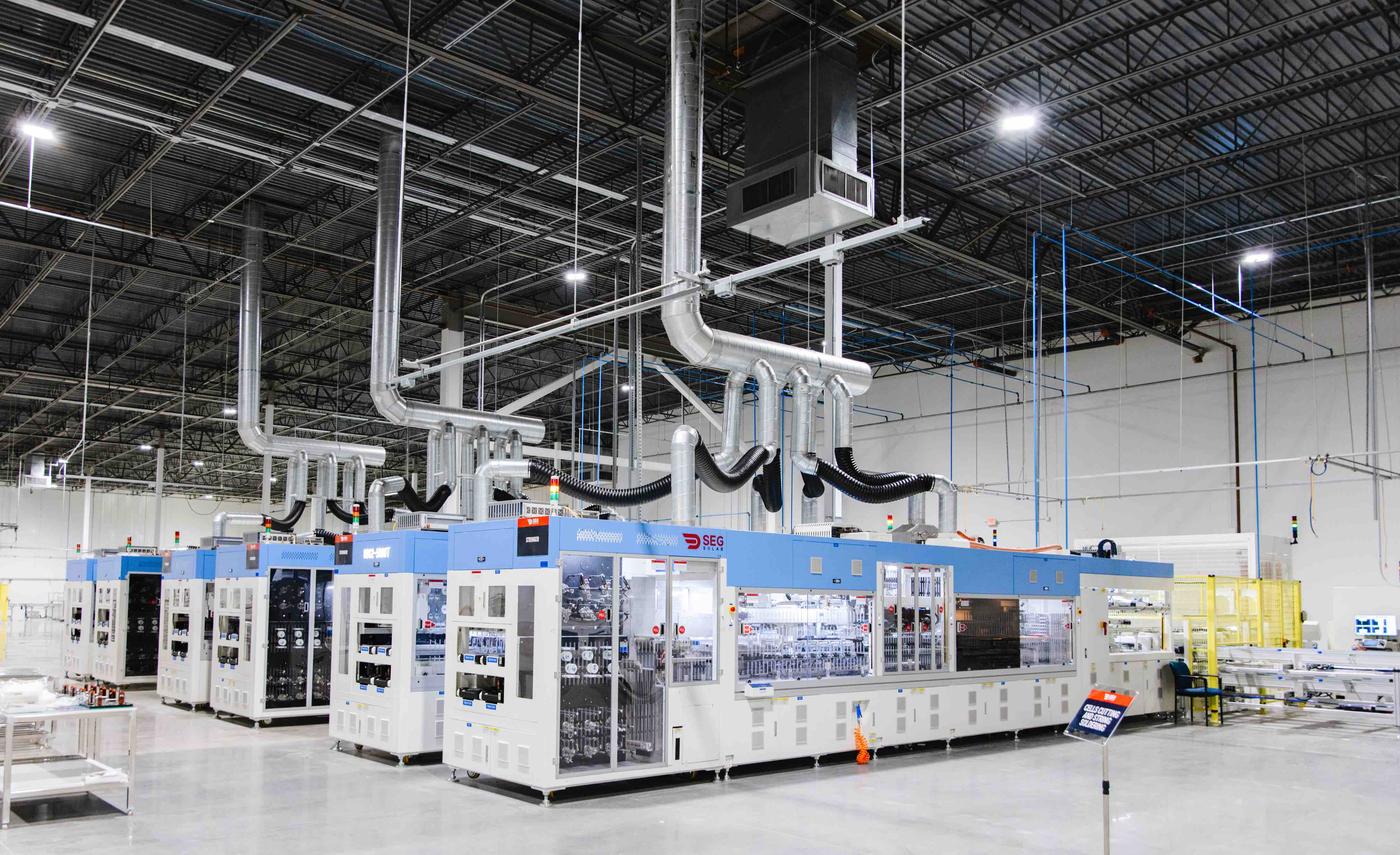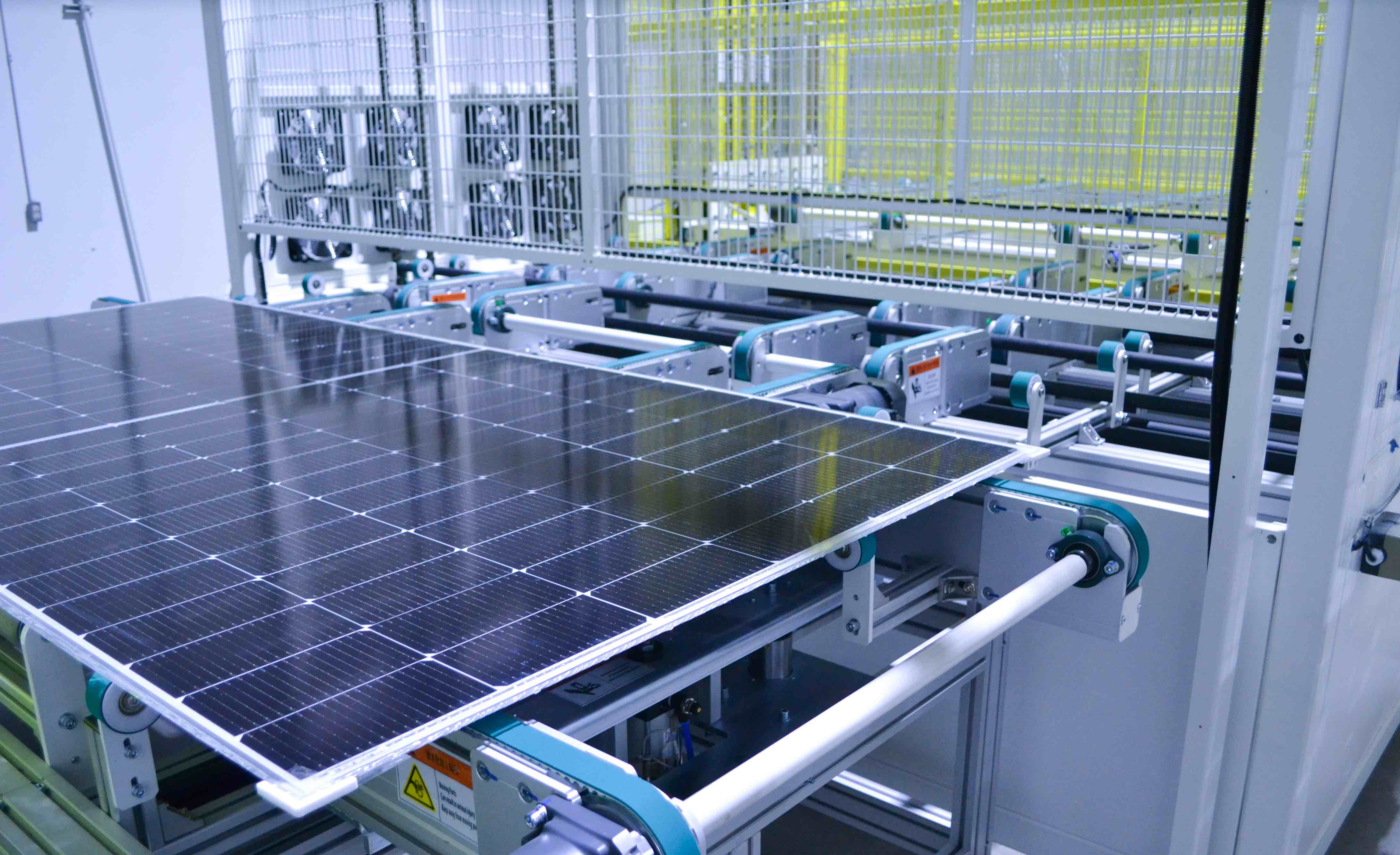Updated 1 year ago
SEG Solar Cuts the Ribbon on its New Texas Manufacturing Plant
Written by
Ben Zientara

On August 8th, 2024, SEG Solar officially opened its new solar module manufacturing plant at its world headquarters in Houston, Texas. Nearly 300 invitees, including SEG partners, journalists, and other solar industry members, attended the event.
The new facility is the latest in a series of new solar plants opened in the United States since the passage of the Inflation Reduction Act in 2022. For SEG, an American-owned company, opening this plant is the culmination of many years of ideation and planning. The U.S. solar module manufacturing industry is poised to more than double in size in 2024 compared to 2023, and SEG’s new facility is one more step toward that outcome.
The ribbon-cutting ceremony featured keynote speeches from SEG COO Jun Zhuge and CEO Jim Wood, as well as speeches from industry leaders and representatives from the offices of local officials. During the ceremony, the first 585-watt YUKON-N solar module rolled off the production line and was placed in a special frame for attendees to sign.

The first 585-watt module produced in SEG Solar’s Houston facility. Courtesy of SEG Solar
The facility

Call stringing machines at the SEG Solar manufacturing plant in Houston. Courtesy of SEG Solar
After the ribbon cutting, SEG employees welcomed attendees to tour the production line and observe as solar cells were automatically wired together and placed between layers of glass and EVA plastic, eventually forming completed modules.
We weren’t allowed to capture photographs or video of the production line, but we did gain several insights into the production process, as well as the quality assurance and electroluminescence (EL) testing that happens at several places along the line.
The SEG representative hosting our tour group told us that the plant’s lamination machine (which bonds the layers of plastic and glass with the cells into a watertight package) and RTV Curing Chamber (where the silicone material that protects the junction boxes is cured) are the longest in North America.

A newly-laminated solar module awaits the next step in the manufacturing process. Courtesy of SEG Solar
SEG’s current and future plans
Our tour of the facility included several machines near the end of the production line that were not yet operational, and SEG says that work will continue to bring the plant to full production capacity. During his keynote address, CEO Jim Wood said that the space where the ceremony will be held will hold a research and quality assurance laboratory.
Another company representative later told us that SEG plans to add a second production line before the end of 2024 to increase its production capacity to 2 GW of modules per year.
SEG currently employs about 50 people at the Houston facility. Once both production lines are operating with 3 shifts per day, the company anticipates having around 300 employees split between production and administration.
SEG General Counsel Michael Eden told us the company anticipates qualifying for the Federal Advanced Manufacturing Production Tax Credit (45X MPTC), which came about due to the Inflation Reduction Act of 2022. Section 45X offers a tax credit of 7 cents per watt-DC of solar modules manufactured in the USA.
In 2025, SEG plans to open a 5-GW solar cell manufacturing plant in Indonesia, which will supply cells to the company’s module plants worldwide.
What the plant opening means for the industry
Opening a new stateside solar manufacturing facility is always cause for celebration. Much of the photovoltaic technology used around the world today was first invented or developed in the United States, but manufacturing of solar products was off-shored long ago.
U.S.-based solar manufacturing is a challenging business. The main competition for stateside companies comes from China, which heavily subsidizes its solar industry, resulting in ultra-low-cost solar modules for shipment throughout the world.
With the plant in Houston, SEG joins dozens of other American solar panel manufacturers, including First Solar, Qcells, Silfab, Jinko, and Mission. SEG says one thing that makes it stand out is that it is 100% American-owned, which only a few companies can claim.
That distinction will help the company if the bipartisan American Tax Dollars for American Solar Manufacturing Act gains traction in the current congressional session. The bill would eliminate the Section 45X credits for components “produced by a foreign entity of concern” (a list that includes China).
The U.S. government has also used several other strategies to try to attract solar manufacturers to the country. These include tariffs on imported Chinese panels and tax incentives for companies that build factories here.
On Monday, August 12th, President Biden announced that he would more than double the amount of cells allowed into the country that will be exempt from tariffs. The President’s action will likely be welcomed by module manufacturers, who will now have a more certain supply of inexpensive components, but it may upset companies that want to build their own cell plants in the country.
This situation may change based on who becomes President on January 20th, 2024. Solar manufacturers like SEG will need to be smart to work with the next administration and ensure strong support for the industry.
Ben Zientara is a writer, researcher, and solar policy analyst who has written about the residential solar industry, the electric grid, and state utility policy since 2013. His early work included leading the team that produced the annual State Solar Power Rankings Report for the Solar Power Rocks website from 2015 to 2020. The rankings were utilized and referenced by a diverse mix of policymakers, advocacy groups, and media including The Center...
Learn more about Ben Zientara